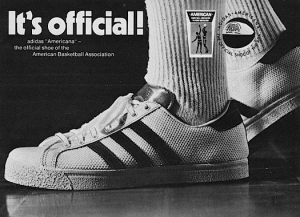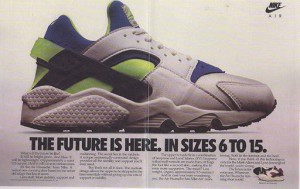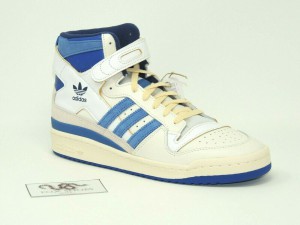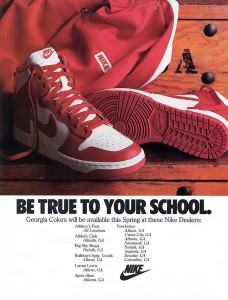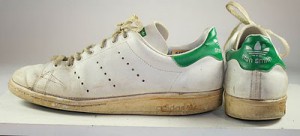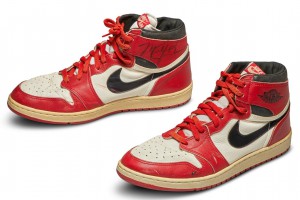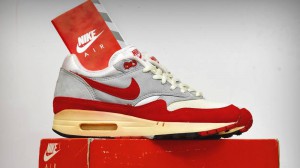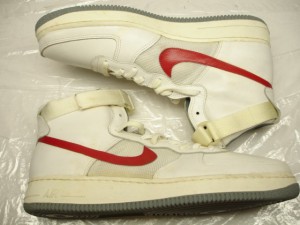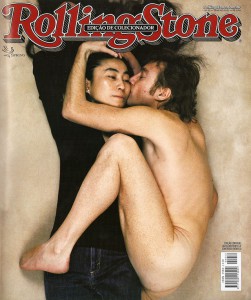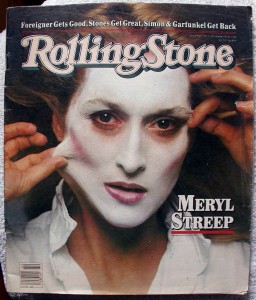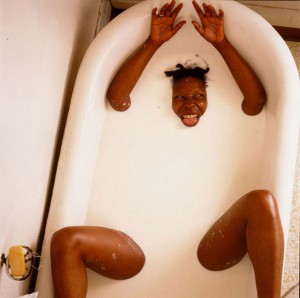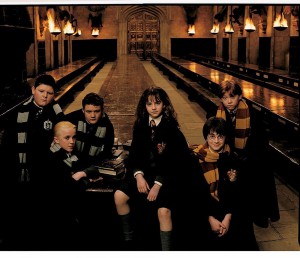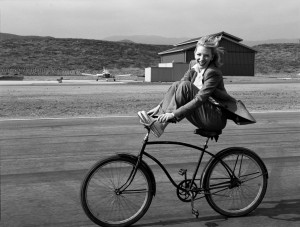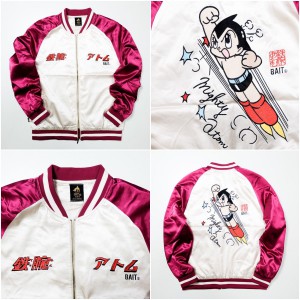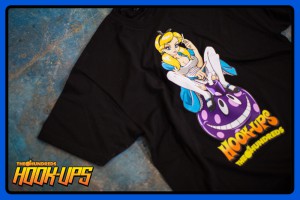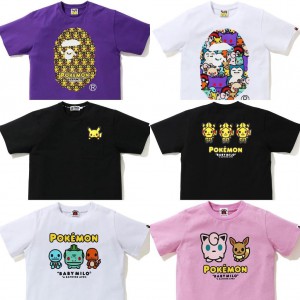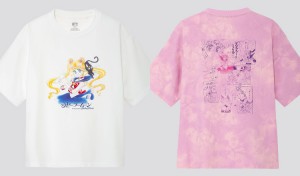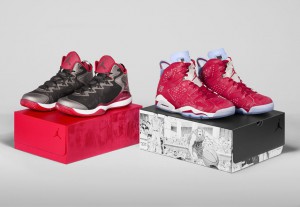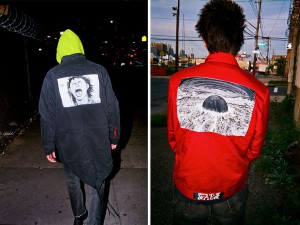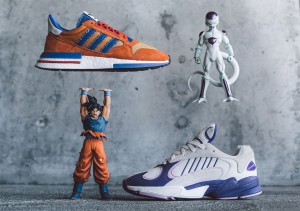Adidas Superstar
A classic from Adidas that came out in the seventies. A distinctive feature of the model was the „shell” on the toe, protecting the toes. Karim Abdul-Jabbar, a basketball player who wore them at the height of his career in 1970-71, played a big role in their popularity.
B-boys and skateboarders were inspired by the athletes’ outward attributes. The Superstar was considered a prestigious sneakers in the U.S. because it was chosen by local Bronx trendsetters and innovators, earning street cred. All of this combined to make the silhouette the most sought after in the eighties. To cope with the huge demand, Adidias expanded production of the lineup to socialist Hungary and Czechoslovakia.
Nike Huarache
The idea for the Huarache sneakers came from water-skiing: designer Tinker Hatfield noticed that neoprene socks fitted snugly around the foot. It dawned on Hatfield that this synthetic material insert in these sneakers would help adapt them better to the individual foot, making them more comfortable and practical.
While working on the sketch, another idea occurred to the designer – how to fix the neoprene sock. Tinker came up with a special support system for the foot, reminiscent of the straps of sandals, the so-called „exoskeleton” on the outside of the sneaker. Thanks to this element the model was called „Huarache,” which is the word the Mexicans call sandals.
In 1991, the sneakers project was turned into a final sample, but it suffered a complete commercial fiasco. Only one wholesaler was interested in it, and he ordered only 50 pairs. This meant that this innovative model was not going to see the light of day.
Tom Archie, who was responsible for the technical part of the project, intervened in the situation. He believed in the success of Huarache and bypassed the management to place an order with the factory for 5000 pairs, which had to be distributed clandestinely at the Nike stand at the New York City Marathon. Unlike sporting goods retailers, running enthusiasts immediately appreciated the novelty’s unusual design and comfort. This opened up the Huarache sneakers to the general public – already by the end of the first year of sales Nike had managed to sell more than 250,000 pairs.
Adidas Forum
Their story began in 1983 in France. The designer Jacques Chassaing would be an essential player in both the outsider team of the 80s and the current one.
The ideologist thought of creating a basketball sport that would favor the whole team, keeping in mind the diversity of athletes, their different roles, and physical characteristics. Through conversations with coaches and players, he located the weak point in the ankle. He visualized the bands used by the psychotherapists to stabilize it and decided to integrate a stabilizing element into the shoe: the ‘criss-cross ankle system’, which embraces and protects the whole area.
After a process of material exploration and inclusion of elements such as a special shock-absorbing sole, the sneakers made its debut in 1984. That same year, Jordan would wear them during the Olympic basketball trials in the USA.
Nike Dunk
The sneakers has made a transition from the B-ball space to skate culture – making the history of the Nike Dunk incredibly rich.
The Nike Dunk is by far one of the Swoosh’s most recognizable sneakers. The silhouette was first introduced in 1985 alongside the Air Jordan 1. Since then, it has shifted from college basketball to skate culture and now solidified itself as a streetwear staple. Over 30 years on, a younger generation has arrived to embrace history.
The history of the Nike Dunk began on college basketball courts. To take on the new market, Nike released the Nike Dunk – a sneakers specifically meant for college teams that were under Nike. This saw the release of the “Be True To Your School” colors. Each team would receive Dunks in their team colors.
Eventually, the sneakers received a mid-life update and received a nylon tongue. This made the sneaker way more comfortable and was soon adopted by skaters and sneakerheads who just loved the silhouette.
